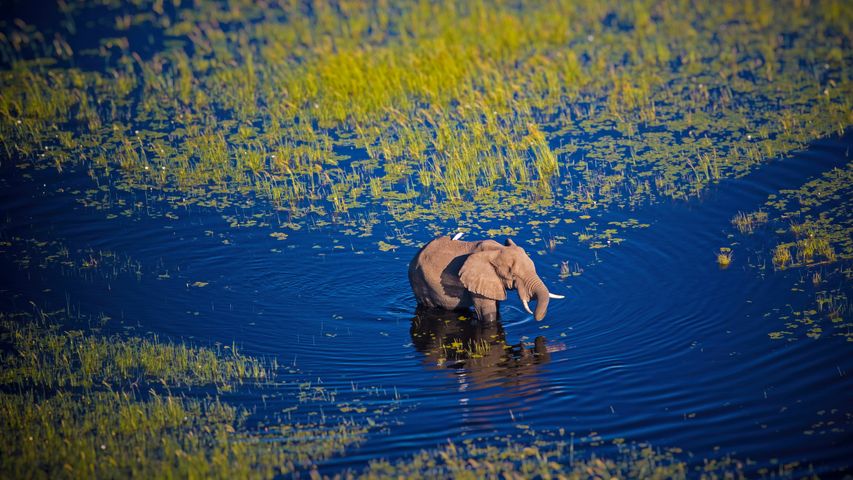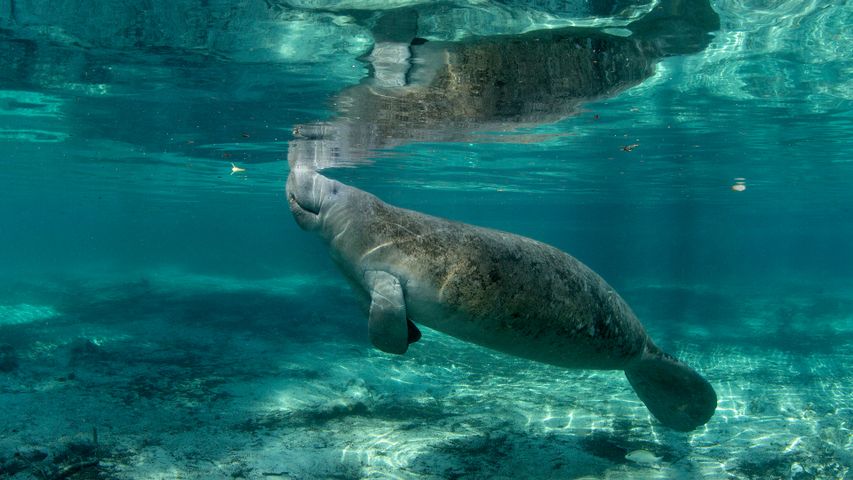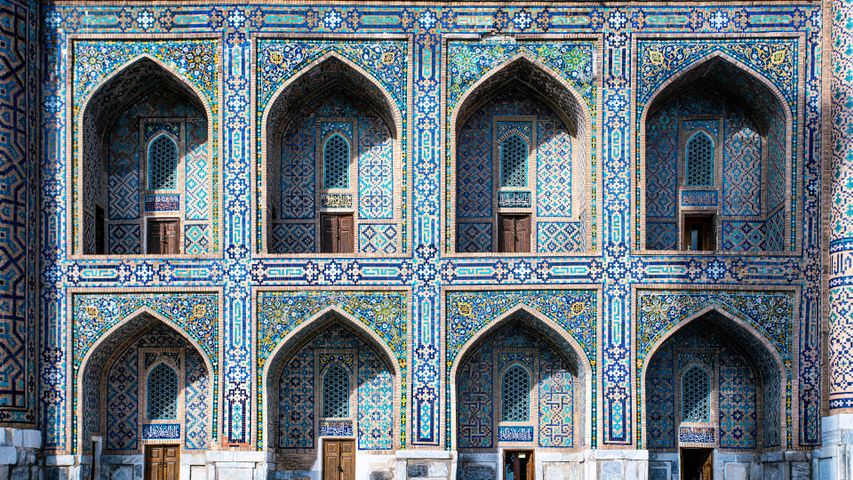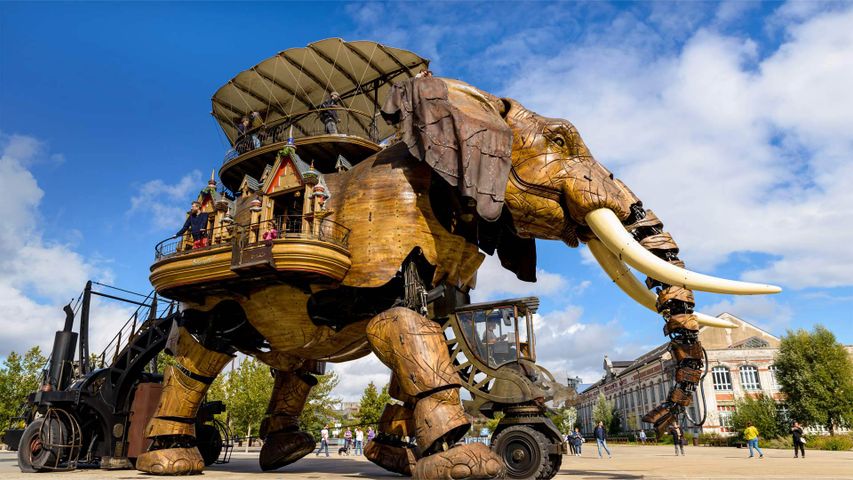Elephant walking in the Okavango River, Botswana
© Markus Pavlowsky/Getty Image
The world’s greatest oasis?. Okavango River, Botswana
Unlike most river deltas - the wetland area created where rivers drain into oceans or lakes - this one in Botswana empties into the open savanna. The marshland of the Okavango Delta swells threefold once a year, between March and July, when rains from the highlands of Angola flow 750 miles until they flood the arid savannah grassland of north-west Botswana. The water draws a huge array of African wildlife from lions and rhinos to giraffes and zebras – not to mention the planet’s largest land animals, elephants.
Most of the world’s elephants, more than 400,000, live in Africa, and Botswana has the largest population. Most are bush elephants, larger than the African forest elephants who live in the Congo Basin. But both are endangered by habitat loss and poaching, and their populations are about a tenth of what they were at the peak in the last century.
The amount of water that fills the Okavango Delta is estimated to be 2.6 cubic miles, much of which will eventually be consumed, absorbed and evaporated as the delta returns to more closely resembling the surrounding savannah once again. Until the next rains come.
Related Images
Bing Today Images


 Vila Franca Islet, São Miguel Island, Azores, Portugal
Vila Franca Islet, São Miguel Island, Azores, Portugal
 Steller sea lions, Vancouver Island, British Columbia, Canada
Steller sea lions, Vancouver Island, British Columbia, Canada
 Cala Luna beach, Sardinia, Italy
Cala Luna beach, Sardinia, Italy
 Porto Flavia, Sulcis-Iglesiente, Sardinia, Italy
Porto Flavia, Sulcis-Iglesiente, Sardinia, Italy
 Atlantic spotted dolphins near Santa Maria Island, Azores, Portugal
Atlantic spotted dolphins near Santa Maria Island, Azores, Portugal
 Manatee in Crystal River, Florida, United States
Manatee in Crystal River, Florida, United States
 Black heron canopy hunting, Chobe National Park, Botswana
Black heron canopy hunting, Chobe National Park, Botswana
 European river otter, Lelystad, Netherlands
European river otter, Lelystad, Netherlands



